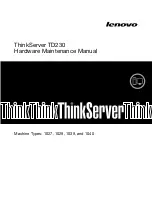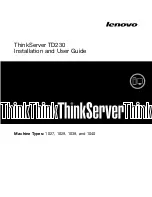
– Switch off power.
– Send another person to get medical aid.
Inspecting the system for unsafe conditions
Use caution when you are working in any potential safety hazardous situation that is not covered in the
safety checks. If unsafe conditions are present, determine how serious the hazards are and whether you
can continue before you correct the problem.
Before you begin
Before you start the safety inspection, make sure that the power is off, and that the power cord is
disconnected.
About this task
Each device has the required safety items that are installed to protect users and support personnel from
injury. Only those items are addressed.
Important: Good judgment must also be used to identify potential safety hazards due to the attachment
of non-IBM features or options that are not covered by this inspection guide.
If any unsafe conditions are present, you must determine how serious the apparent hazard might be and
whether you can continue without first correcting the problem. For example, consider the following
conditions and their potential safety hazards:
Electrical hazards (especially primary power)
Primary voltage on the frame can cause serious or lethal electrical shock.
Explosive hazards
A damaged CRT face or a bulging capacitor can cause serious injury.
Mechanical hazards
Loose or missing items (for example, nuts and screws) can cause serious injury.
To inspect each node for unsafe conditions, use the following steps. If necessary, see any suitable safety
publications.
Procedure
1. Turn off the system and disconnect the power cord.
2. Check the frame for damage (loose, broken, or sharp edges).
3. Check the power cables by using the following steps:
a) Ensure that the third-wire ground connector is in good condition. Use a meter to check that the
third-wire ground continuity is 0.1 ohm or less between the external ground pin and the frame
ground.
b) Ensure that the power cord is the appropriate type, as specified in the parts listings.
c) Ensure that the insulation is not worn or damaged.
4. Check for any obvious nonstandard changes, both inside and outside the unit. Use good judgment
about the safety of any such changes.
5. Check inside the node for any obvious unsafe conditions, such as metal particles, contamination,
water or other fluids, or marks of overheating, fire, or smoke damage.
6. Check for worn, damaged, or pinched cables.
7. Ensure that the voltage that is specified on the product-information label matches the specified
voltage of the electrical power outlet. If necessary, verify the voltage.
8. Inspect the power-supply assemblies and check that the fasteners (screws or rivets) in the cover of
the power-supply unit are not removed or disturbed.
9. Check the grounding of the network switch before you connect the system to the storage area network
(SAN).
xxiv SAN Volume Controller : Model 2145-SV1 Hardware Installation Guide
Содержание SAN Volume Controller 2145-SV1
Страница 1: ...IBM SAN Volume Controller Hardware Installation Guide IBM...
Страница 6: ...vi...
Страница 48: ...16 SAN Volume Controller Model 2145 SV1 Hardware Installation Guide...
Страница 62: ...30 SAN Volume Controller Model 2145 SV1 Hardware Installation Guide...
Страница 72: ...40 SAN Volume Controller Model 2145 SV1 Hardware Installation Guide...
Страница 156: ...Figure 136 Connecting the SAS cables 124 SAN Volume Controller Model 2145 SV1 Hardware Installation Guide...
Страница 168: ...136 SAN Volume Controller Model 2145 SV1 Hardware Installation Guide...
Страница 176: ...144 SAN Volume Controller Model 2145 SV1 Hardware Installation Guide...
Страница 178: ...146 SAN Volume Controller Model 2145 SV1 Hardware Installation Guide...
Страница 182: ...150 SAN Volume Controller Model 2145 SV1 Hardware Installation Guide...
Страница 192: ...160 SAN Volume Controller Model 2145 SV1 Hardware Installation Guide...
Страница 193: ......
Страница 194: ...IBM...
















































